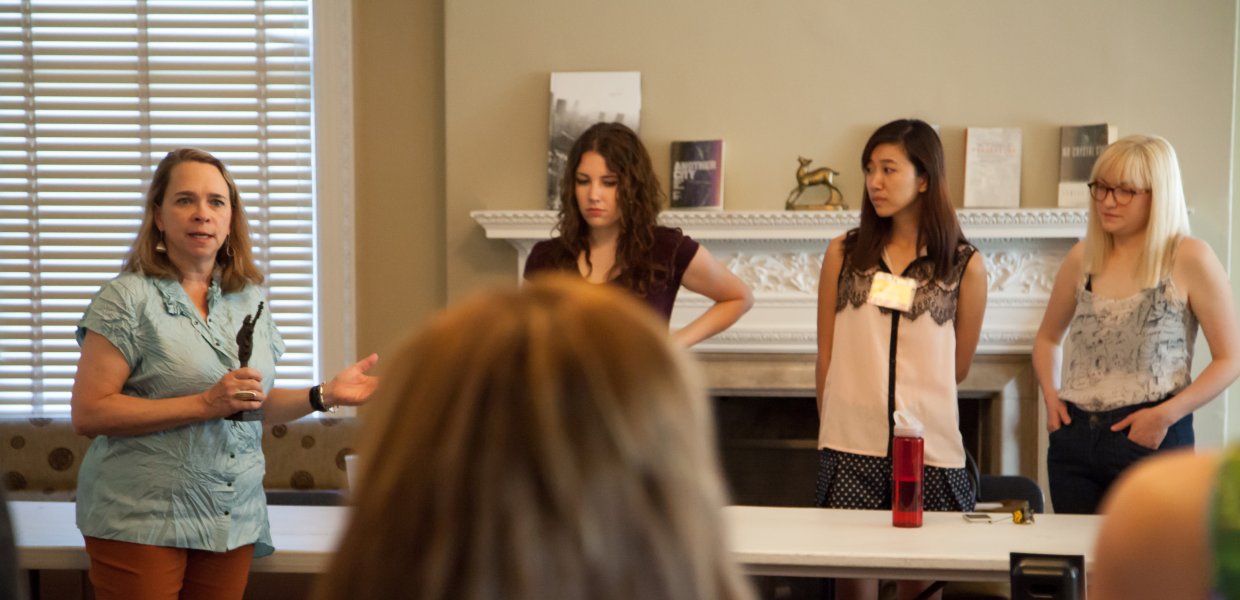Journalism Professor and Director of Arts Journalism Programs Sasha Anawalt and the Music Center Los Angeles celebrated the 100th anniversary of Stravinsky and Nijinsky’s The Rite of Spring this past weekend with performances by The Joffrey Ballet.
Anawalt spoke at six events last weekend about the history of both The Rite of Spring and Joffrey’s reconstruction of the 1913 ballet.
On Wednesday, she participated in the Music Center’s first-ever live Twitter chat to answer questions. Arts journalists and dance aficionados chimed in to discuss the riot that followed the premiere in Paris and how Joffrey was able to rescue from oblivion the production that was performed only eight times, and yet that heralded in modernism and changed both dance and music forever.
“What was interesting to me about Wednesday,” said Anawalt, “is the connection you have truly through your friends. They are your distribution network through Twitter and Facebook. How you talk to them and gain an audience is an exercise in journalism, and is the foundation of what we are doing in the master’s programs in arts journalism.”
Anawalt said the rise of social media has already changed the future of journalism and is changing the way it is taught. She said her focus five years ago as an arts journalism professor would have been to educate her students about Joffrey’s Rite of Spring, dance and essentially how to be a critic. Now, arts journalism master’s students are involved in much more than traditional writing.
“I have two students who have been watching The Rite of Spring rehearsals with the public school children and videotaping it. They are involved in a three week process of watching how kids learn this particular dance they are performing Sunday afternoon at the Music Center,” Anawalt said.
Another of Anawalt’s students is attaching herself to the Music Center for three weeks to conduct a social media experiment of her own. Anawalt said that her student was not part of the marketing team, but instead will use the exercise to analyze how audiences are engaged and built. Anawalt’s Twitter chat Wednesday taught her valuable lessons in the use of social media platforms for the arts.
“One of the things I learned is about social flow. You have to meet your audience at the right moment,” she said. “The audience has to be primed and ready to join the conversation. You can have the best content in the world, but if nobody sees it, what difference does it make?”
The evolution of Anawalt’s book, The Joffrey Ballet: Robert Joffrey and the Making of an American Dance Company, paved her way as an arts educator into the digital age. The book, originally published in 1996, has since been published as an e-book and was released in 2012 to coincide with the release of the feature film documentary, Joffrey: Mavericks of American Dance. The digital release allowed each chapter to be spread and sold separately enabling it to reach different audiences on various platforms.
“If you want your students to know how to do cross-platform storytelling and be savvy about media and transmedia, you need professors who are doing what they are teaching,” she said.
Anawalt is also known for her role as co-producer of Engine 28, Engine 29 and Engine 30, an interdisciplinary mix of USC Annenberg students, media partners, including the Los Angeles Times, KCET and KPCC, and collaborators who are Web designers, Web developers and arts journalists. Anawalt’s experimental projects in arts journalism and knowledge of influential arts performers like the Joffrey Ballet contribute to USC Annenberg’s digital advantage.









